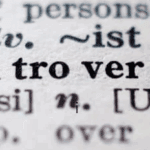
Running Dry: Kumaon’s Water Crisis and the Villages Left Behind

Nestled in the Himalayas, Uttarakhand’s Kumaon region is known for its breathtaking beauty and pristine landscapes. However, beneath the picturesque facade lies a growing crisis – a scarcity of water, the very essence of life. This blog post dives into the alarming situation in Kumaon, the role of water mafias, and what the government can do to alleviate the suffering.
A Reality Check: Statistics Paint a Grim Picture
- Shrinking Resources: Glacier retreat in the Himalayas, the source of major rivers like the Ganga and Yamuna, is impacting downstream water flow. A 2022 study by the Intergovernmental Panel on Climate Change (IPCC) predicts a 20-30% reduction in freshwater availability in the Ganges basin by mid-century.
- Demand Outpaces Supply: Kumaon’s population has grown steadily, putting a strain on existing water resources. A 2018 report by the NITI Aayog estimates a 40% water deficit in Uttarakhand, with Kumaon being particularly vulnerable.
Fractured by Thirst: The Human Cost of Water Scarcity
The lack of water has a devastating impact on daily life in Kumaon. Villages, like the one I visited in Gadholi near Kasar Devi, rely heavily on natural reservoirs like springs and streams. However, as the summer sun beats down and the rains fail to arrive, these sources dwindle, leaving villagers desperate. Friction erupts as families compete for the limited water available, leading to arguments and even physical altercations. This desperate struggle for survival is a stark reminder of the human cost of water scarcity.
This desperate struggle for survival is further compounded by the influx of tourists. Kumaon’s beauty has fueled a boom in hotels and homestays, all with their own water demands. These establishments often rely on the same strained resources as the villagers, exacerbating the scarcity.
The Shadowy Figure: Water Mafias and Their Grip
The water scarcity has given rise to a disturbing trend – the emergence of water mafias. These illegal groups exploit the situation by:
- Exploiting Groundwater: They use illegal borewells to extract groundwater, further depleting the water table.
- Controlling Water Supply: Mafias sometimes control local water distribution systems, manipulating prices and creating an artificial scarcity.
- Intimidation Tactics: Residents, particularly in vulnerable villages, are often intimidated by water mafias, making it difficult to speak out against their practices.
A Glimmer of Hope: Solutions for a Sustainable Future
The government needs to take immediate action on several fronts:
- Water Resource Management: Effective rainwater harvesting, reviving traditional water conservation methods, and stricter regulation of groundwater extraction are crucial.
- Infrastructure Development: Building and repairing water pipelines, along with functional pumping stations, are essential to ensure water reaches every household.
- Combating Water Mafias: A strong crackdown on illegal water extraction and distribution practices is needed to break their hold.
- Community Awareness: Educating villagers about water conservation techniques and empowering them to report water mafia activities is vital.
The Road Ahead: A Collective Effort
The water crisis in Kumaon is a complex issue requiring a multi-pronged approach. The government’s commitment to infrastructure development, resource management, and combating water mafias is crucial. But this cannot be achieved without community participation. Spreading awareness and encouraging rainwater harvesting at the household level are equally important.
Kumaon’s natural beauty is a treasure worth protecting. By working together, we can ensure that this region doesn’t become a victim of its own aridity. We can turn the tide and ensure a future where every village has access to this life-sustaining resource.
Hello, I am Aman (: Full Time Traveler :) At the age of 41, in April 2023, fueled by my love for travel and the determination not to remain fixed like a tree, I embarked on a bold journey. Having dedicated 17 years to a corporate job, I chose to transition from a full-time employee to a full-time traveler, driven by the desire to break free from the routine and constraints of a conventional life. Along the way, I not only explored the wonders of travel but also uncovered the transformative power of financial freedom. I realized how it could liberate me to lead a life teeming with adventure, purpose, and fulfillment. Through my blogs, I am passionately sharing my story, aiming to inspire and provide valuable guidance to those, like me, who aspire to weave travel into a life overflowing with limitless possibilities.





















Post Comment
You must be logged in to post a comment.